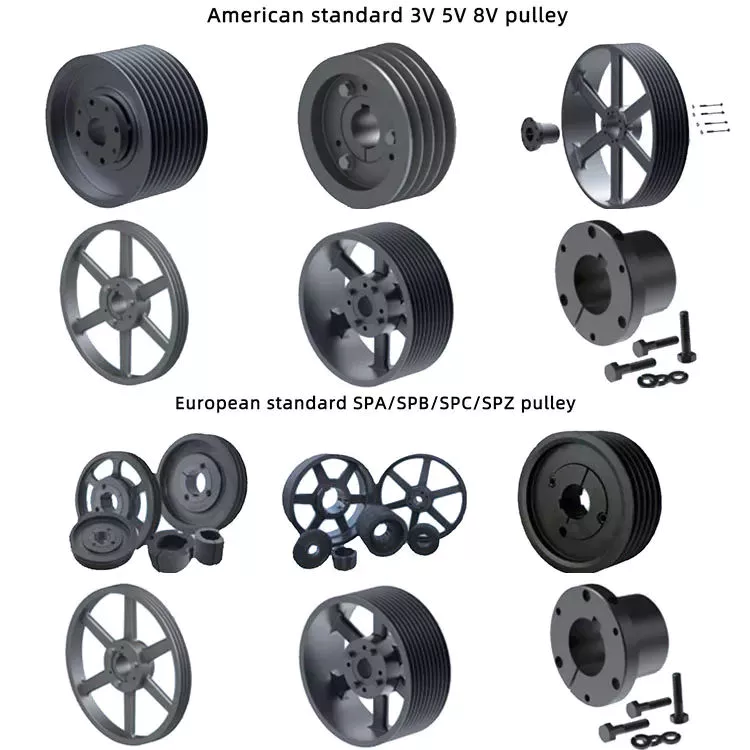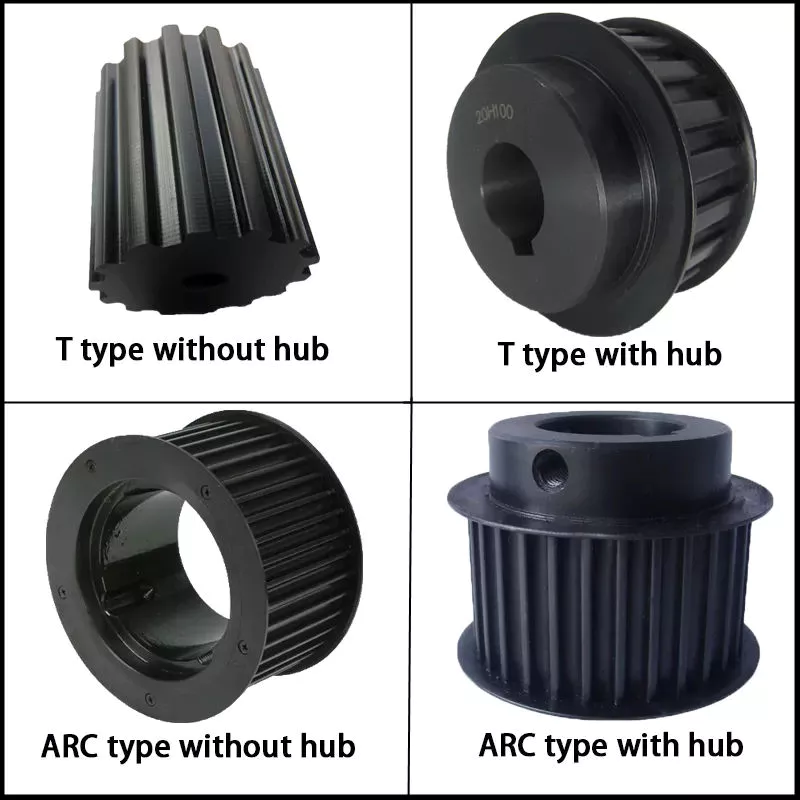Opis produktu
| Produkt | as shown in the picture |
| Rozmiar | custom-made (provide drawings or pictures) |
| Tworzywo | nylon plastic/ steel/ aluminium/ zinc/ pvc… |
| Kolor | orange, white, black, yellow, blue, red… |
| Applacation | sliding door and window, binds, furniture, Roll-up door, Conveyor belt… |
| Normal Packing | poly bag + outer carton |
We have too many products about window and door rollers.
please send me pictures or drawings.
So that I can confirm with you as soon as possible. Thank you.
About us
We are committed to developing and designing different kinds of non-standard pulley bearings, with an annual production capacity of 120 million sets. We export to more than 70 countries and areas, like USA, Canada, Spain, Germany, France and Italy, etc.
Our company maintains our quality system to ISO 9001:2000, and has been audited by SGS for our production operations. We will continuously seek to provide our customers with good-quality products, excellent service and most competitive price. We look CHINAMFG to building long-term business relationship with you and achieving our mutual benefits.
Factory is specialized in manufacturing non-standard bearing, plastic and metal pulley, bracket pulley, roller, door and window fittings, etc. Relying on a series of advanced processing equipments, skilled workers, strict inspection system, and organized management, we are able to provide good-quality products with competitive price.
Why choose us
1.Professional experience: almost 20 years’ expenience in non-standard bearings, rollers, pulleys, and other plastic accessories for door and window.
2.Popular over the world: over 20 market countries.
3.Advantage: good quality with competitive price.
4.OEM offered: technical drawings, samples or photos are needed.
Canton Fair
Factory Picture
Często zadawane pytania
Q: How to get a quotation and start business relationship with your company?
A: Please send us email and our sales representive will contact you as soon as we receive your email.
Q: How to receive a quotaion in the shortest time?
A: When you send us an enquiry, please try to provide more details, such as product size, photo or drawing, order quantity, etc.
Q: How to start an OEM project with your company?
A: Please send us your designed drawings or original samples so that we can offer a quotation first. If all details are confirmed, we will arrange sample production once received your deposit.
Q: What’s your MOQ?
A: The MOQ depends on the design and production processes of the products. Nomally our company MOQ is 10000pc , but it can be much more or less depending on different product types. Therefore, we recommend you to tell us your required quantity first.
Q:How long can I receive an order?
A: That depends on the specific items and your order quantity. The lead time varies from 30 to 90 days.
Skontaktuj się z nami
HangZhou CHINAMFG Pulley Manufacture Co., Ltd.
WEBSITE: http://nbminli /
ADDRESS: No.9 CHINAMFG Road, CHINAMFG Industrial Zone, Xihu (West Lake) Dis. District, HangZhou, China
We have many products about door and window rollers, accessories, bearings.
Support customization, If you are interested in, please send me a message.
/* March 10, 2571 17:59:20 */!function(){function s(e,r){var a,o={};try{e&&e.split(“,”).forEach(function(e,t){e&&(a=e.match(/(.*?):(.*)$/))&&1
| Rolling Body: | Roller Bearings |
|---|---|
| The Number of Rows: | Single |
| Outer Dimension: | Small (28-55mm) |
| Próbki: |
US$ 0.1/Piece
1 sztuka (minimalne zamówienie) | Zamów próbkę |
|---|
| Personalizacja: |
Dostępny
| Spersonalizowane żądanie |
|---|
.shipping-cost-tm .tm-status-off{tło: brak;wypełnienie:0;kolor: #1470cc}
|
Koszt wysyłki:
Szacowany koszt przesyłki za jednostkę. |
o kosztach wysyłki i szacowanym czasie dostawy. |
|---|
| Metoda płatności: |
|
|---|---|
|
Płatność początkowa Pełna płatność |
| Waluta: | US$ |
|---|
| Zwroty i zwroty pieniędzy: | O zwrot pieniędzy możesz ubiegać się w ciągu 30 dni od otrzymania produktów. |
|---|

Can pulleys be used in both simple and complex mechanical systems?
Yes, pulleys can be used in both simple and complex mechanical systems. Pulleys are versatile mechanical devices that can be incorporated into a wide range of systems to transmit power, change direction, or provide mechanical advantage.
In simple mechanical systems, pulleys are often used to create a mechanical advantage by reducing the effort force required to lift or move a load. For example, a simple pulley system with a single fixed pulley can distribute the load’s weight over multiple strands of rope or cable, reducing the force needed to lift the load. Simple pulley systems are commonly used in applications such as flagpoles, well buckets, or manual hoists.
In more complex mechanical systems, pulleys can be part of intricate arrangements to achieve specific functions. They can be combined with multiple pulleys, belts or ropes, and other mechanical components to create complex systems for power transmission, tensioning, or precise control. Examples of complex systems that utilize pulleys include conveyor belt systems, industrial machinery, cranes, and elevators.
Pulleys offer several advantages in both simple and complex mechanical systems:
1. Mechanical Advantage: Pulleys can provide a mechanical advantage by distributing the load’s weight over multiple strands of rope or belt, reducing the effort force required to lift or move the load.
2. Direction Change: Pulleys can change the direction of the force applied, allowing for redirection of motion or routing of belts or ropes around obstacles.
3. Speed Adjustment: By adjusting the size of pulleys and the number of pulley systems, the speed of the output motion can be modified relative to the input motion.
4. Power Transmission: Pulleys are effective in transmitting power between shafts or components, allowing for the transfer of rotational motion and torque.
5. Versatility: Pulleys can be used with different types of belts or ropes, such as flat belts, V-belts, timing belts, or wire ropes, providing flexibility in design and application.
Whether in simple or complex mechanical systems, the selection, arrangement, and sizing of pulleys should be carefully considered to ensure proper functionality, efficiency, and safety. Manufacturers’ guidelines, engineering principles, and best practices should be followed when incorporating pulleys into mechanical systems.

Jak wykorzystuje się koła pasowe w olinowaniu teatralnym i scenicznym?
Pulleys play a vital role in theater and stage rigging, enabling the movement of scenery, props, and equipment with precision and control. They are essential components of the rigging systems used in theaters and stages for lifting, flying, and manipulating various elements during performances. Here’s how pulleys are commonly used in theater and stage rigging:
1. Systemy Fly: Systemy Fly służą do podnoszenia i opuszczania scenografii, tła, kurtyn i innych elementów na scenę i z niej. Składają się z szeregu kół pasowych, znanych jako bloki, zamontowanych na listwach lub kratach. Koła pasowe umożliwiają użycie przeciwwag lub systemów silnikowych do kontrolowania ruchu ładunków. Zmieniając konfigurację kół pasowych i regulując przeciwwagi, ekipy sceniczne mogą osiągnąć płynny i precyzyjny ruch pionowy podnoszonych elementów.
2. Systemy przeciwwagi: Systemy przeciwwagi, powszechnie stosowane w systemach fly, wykorzystują koła pasowe do prowadzenia lin podnoszących i rozprowadzania obciążenia. Koła pasowe pomagają zmniejszyć tarcie i zapewniają płynny i wydajny ruch przeciwwag. Poprzez dostosowanie liczby i układu kół pasowych, a także ilości przeciwwag, technicy mogą osiągnąć pożądaną równowagę i kontrolować prędkość i ruch elementów latających.
3. Zestawy linowe: Zestawy linowe służą do zawieszania i kontrolowania różnych elementów, takich jak oprawy oświetleniowe, głośniki i sprzęt do efektów specjalnych. W zestawach linowych znajdują się koła pasowe, które przekierowują linie i zapewniają przewagę mechaniczną. Pozwala to technikom na łatwe podnoszenie, opuszczanie i dostosowywanie położenia sprzętu w razie potrzeby. Manipulując systemem kół pasowych, ekipy sceniczne mogą precyzyjnie ustawiać sprzęt i uzyskiwać optymalne oświetlenie, dźwięk i efekty wizualne podczas występów.
4. Systemy automatyczne: W nowoczesnym olinowaniu teatralnym i scenicznym coraz bardziej powszechne stają się systemy automatyczne. Systemy te wykorzystują napędzane silnikiem koła pasowe, znane jako wciągarki lub podnośniki, do sterowania ruchem dekoracji, oświetlenia i innych elementów. Silnikowe koła pasowe umożliwiają precyzyjną i programowalną kontrolę, umożliwiając złożone i dynamiczne efekty sceniczne. Systemy te często zawierają wiele kół pasowych i komputerowe sterowanie w celu zwiększenia automatyzacji i synchronizacji.
5. Zarządzanie linami i kablami: Krążki są również używane w olinowaniu teatralnym i scenicznym do zarządzania linami i kablami. Są one włączane do blokad linowych, systemów zarządzania kablami i urządzeń napinających w celu prowadzenia i przekierowywania lin, zapewniając płynne działanie i minimalizując ryzyko zaplątania lub zaczepienia.
6. Bezpieczeństwo i rozkład obciążenia: Krążki w olinowaniu teatralnym i scenicznym odgrywają kluczową rolę w zapewnianiu bezpieczeństwa i prawidłowego rozkładu obciążenia. Pomagają rozłożyć obciążenie na wiele lin, zmniejszając obciążenie poszczególnych lin lub kabli. Ponadto krążki są często wyposażone w mechanizmy bezpieczeństwa, takie jak urządzenia blokujące lub wtórne układy hamulcowe, aby zapobiec przypadkowym upadkom lub awariom sprzętu.
Ogólnie rzecz biorąc, koła pasowe są integralną częścią olinowania teatralnego i scenicznego, zapewniając mechaniczną przewagę, kontrolę i środki bezpieczeństwa niezbędne do płynnego i precyzyjnego ruchu dekoracji, rekwizytów i sprzętu. Umożliwiają tworzenie wizualnie oszałamiających i wciągających występów, wzmacniając ogólne wrażenia teatralne dla widzów.

How do pulleys contribute to load distribution and lifting?
Pulleys play a crucial role in load distribution and lifting by providing mechanical advantage and distributing the load over multiple segments of rope or belt. Here’s how pulleys contribute to load distribution and lifting:
1. Mechanical Advantage: Pulleys provide mechanical advantage, which allows for the multiplication of the force applied to the rope or belt. When a force is applied to one end of the rope or belt, it creates tension that causes the pulley to rotate. As the pulley turns, the force is transmitted to the load attached to the other end of the rope or belt. By distributing the load over multiple pulleys, the force required to lift the load is reduced, making it easier to lift heavier objects.
2. Load Sharing: Pulleys enable load sharing among multiple segments of the rope or belt. In systems with multiple pulleys, such as block and tackle arrangements, the load is distributed over several segments of rope or belt. Each segment carries a fraction of the load, reducing the strain on each individual segment. Load sharing ensures that the load is evenly distributed, minimizing the risk of overload or failure in any single segment.
3. Directional Change: Pulleys allow for directional change in the force applied to the load. By redirecting the force along a different path, pulleys enable lifting and moving loads in various directions, including vertically, horizontally, or at an angle. This directional change is particularly useful in situations where the force needs to be applied from a different position or angle than the original force application.
4. Balance and Stability: Pulleys contribute to load distribution and lifting by providing balance and stability. The use of multiple pulleys in a system helps to distribute the load evenly, preventing excessive stress on any single point. This balanced distribution of the load enhances stability and reduces the risk of tipping or imbalance during lifting operations.
5. Control and Precision: Pulleys provide control and precision in load distribution and lifting. By adjusting the tension in the rope or belt, operators can achieve precise positioning and movement of the load. This level of control allows for accurate placement of heavy objects and ensures smooth and controlled lifting operations.
6. Increased Lifting Capacity: By leveraging mechanical advantage and load distribution, pulleys increase the lifting capacity. The mechanical advantage gained through the use of pulleys allows for the lifting of heavier loads with less effort. The load is distributed over multiple segments of rope or belt, reducing the force required to lift the load and enabling the lifting of objects that would otherwise be too heavy to lift manually.
Overall, pulleys contribute to load distribution and lifting by providing mechanical advantage, load sharing, directional change, balance and stability, control and precision, and increased lifting capacity. These contributions make pulleys an essential component in various lifting and load handling applications.


redaktor przez CX
2024-02-07
